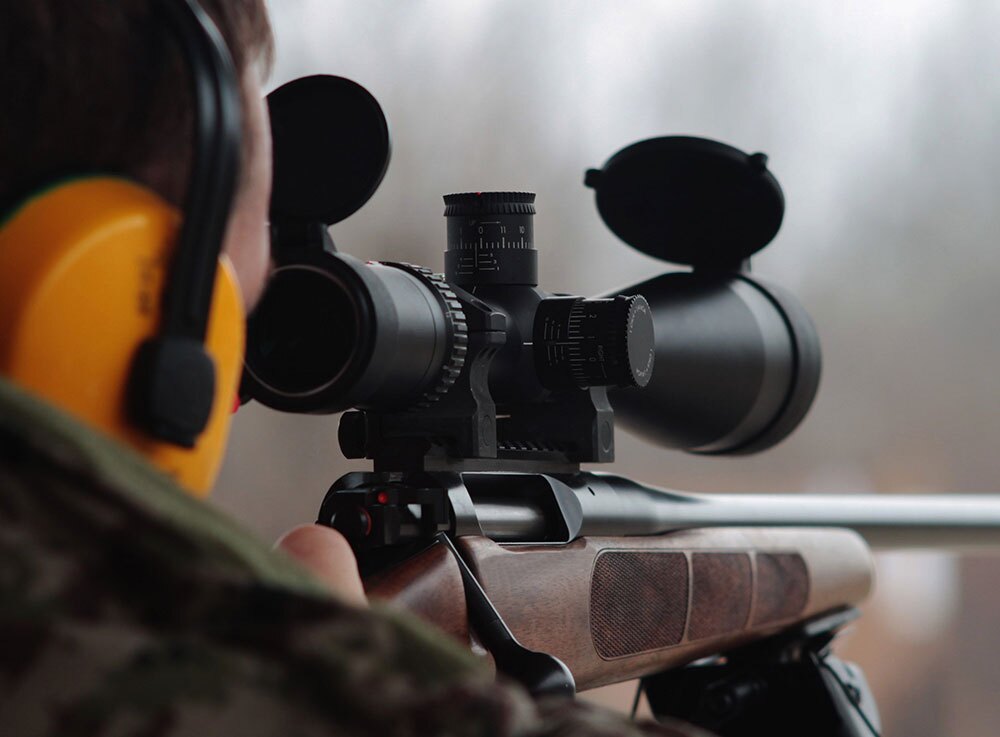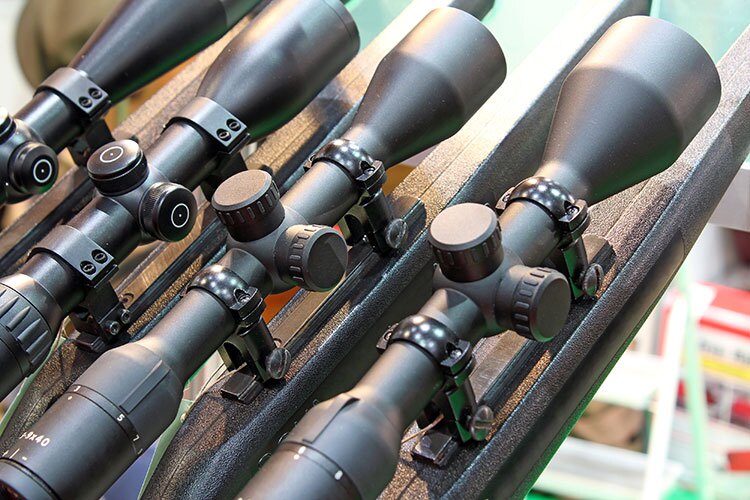
Long-range shooting has become synonymous with precision shooting. Gone are the days of just hitting a large steel gong at super long distances. Today shooters are focused on shooting small controlled groups at what previously would-be unheard-of distances. The factors that go into this are many and include a newly developed interest in the long-range arena. Equally as important however are advancements in equipment and technology. The term MOA or minute of angle refers to the size of a group of shots at a specific distance. Its baseline is set at 100 yards and is equal to a one-inch group at this distance. So, a one MOA rifle will be able to shoot one-inch groups at one hundred yards. Not that many years ago, a MOA or especially a sub-MOA gun was a unique and special production. The reality today is quite the opposite. Finding a gun that is not MOA capable is the anomaly in the firearms industry.
Run the gun
The X factor in all of this, however, is more than just the gun and its ability to perform. The person running the gun must be capable to do what they need to do in order to experience that level of performance. In short, you need to be able to run the gun well in order to get the precision it is capable of. There are many factors that go into this with a mix of training and supplemental equipment. Training on the techniques and methodology behind precision shooting is critical simply because it is unique to that arena.
 Long Range Shooting Mechanics and Equipment
Long Range Shooting Mechanics and Equipment
While obvious things like smooth trigger press and follow-through are found in all shooting skills, the ability to get a good position on the rifle and knowledge of ballistics are also important. Equipment-wise, a serious shooter needs good optics on their gun. Clear, reliable, and durable scopes are one of the cornerstones of accuracy. To many, this is a well-known principle. There is however another item that many shooters overlook, a well-made recoil pad. The laws of physics never take a day off and are a major part of long-range precision shooting. This is, even more, the case in rifle shooting above handgun or even shotgun for that matter because hyper precision is involved.
When the gun is fired, there are a series of events that generate recoil on the gun. There is no escaping it and if not managed correctly, it will ruin your chance of enjoying serious accuracy. A good recoil pad helps in a few ways:
- Mitigates excessive push against the shooter’s shoulder, which can push the shooter out of position even slightly.
- Improves the shooter’s ability to get back on target quickly and reengage with follow up shots.
- Large caliber rifles without a recoil pad will affect a shooter’s physical and psychological mindset in training and competition. Recoil becomes annoying at first and then painful. This can lead to losing focus on the task and worse, a preemptive flinch in anticipation of the discomfort that is headed their way when the next shot fires. This flinch will eliminate any hope at high-performance accuracy. A recoil pad can mitigate these effects.
In most cases, there are slide on rubber devices that have a variety of air spaces or proprietary honeycomb “shock-absorbing” designs. Some provide a modest amount of relief while others are nothing more than a hard piece of rubber attached to your gun.
Hydraulic Recoil Pad for Long Range Shooters
There is another device that falls into the category yet should actually be in a category by itself. It is a custom fit recoil pad that utilizes patented hydraulic dampening technology. This is the FalconStrike and it borrows its design from the aerospace industry. This advanced recoil pad converts up to 80% of the generated recoil energy into heat. That heat, in turn, is then absorbed and distributed evenly at the point of contact with the body. The hydraulic fluid in the device works to match the shooter’s body shape that contours the shoulder when the gun is fired. The result of this is that the gun wraps around you as opposed to the shooter wrapping around the gun. The device touts some very impressive numbers as well. It provides 80% less recoil energy, 35% less muzzle rise, 25% less peak force, and 35% less rock back.
While it may sound cliché, the FalconStrike Hydraulic Recoil Reduction System takes care of everything. The beauty of this design for precision shooting is that it allows the shooter to more effectively stay on target while experiencing no discomfort. It is one item that while overlooked by many, should be an essential part of any precision rifle set up.




